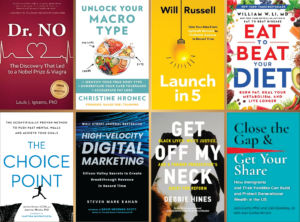2 Big Reasons Why You Should Share Your Book’s Content While You Write It

Share
If you’ve ever worried about sharing the ideas in your book before it’s out, you’re not alone. Often, people come to me convinced that they must keep it all very hush-hush, so that they can make a big splash when the book comes out. While it is certainly wise to withhold some of your content, not sharing enough can work against you.
There are two big reasons why you should share the ideas you intend to include in your book’s content before you finish writing it.
The first is to create a buzz. If no one knows you have interesting thoughts to share, no one will care when your book is out. More on that another time.
The second reason is the subject of this article and this is to get feedback.
Why Get Feedback
If you’re willing to share some of the key points that will be in your book, you gain the opportunity to test not only your ideas, but the words you use to share them. You get to find out, is this making sense? Are people engaging? Do they seem inspired? Amused? Triggered? Are they reacting the way I want them to? If not, why not? How can I say it differently so that my ideas really land?
Here are the two best tactics I recommend to test the waters.
Route #1: Speaking to a Live Audience
This is my absolute favorite way to float content.
The best thing about trying out material this way is you can see the audience. The looks on their faces, their posture in their chair, and where they’re attention is focused speak volumes about how effectively you’re communicating your material and how it’s coming across.
Body language is worth 10,000 words!
When you say something in just the right way, you can literally see their minds go “click.” That funny turn of phrase you thought of using…does it get a laugh or not? That long explanation you feared would lose them, did they check their watches or were they riveted?
You’d be amazed what can come from this.
Sometimes you’ll learn that points you thought would be super relevant to your audience just aren’t hitting. And often, you’ll be surprised by what excites them. Sometimes it’s that thing you threw in there last minute as an afterthought. Armed with that awareness, you can pivot your book’s content to better emphasize that point.
Route #2: Engage with Other Media
Writing begets more writing. Coverage begets more coverage.
While you’re working on your book, I recommend you write articles about some of your key points and try to get them published by national level media. Also, targeting podcasts that cover your subject matter and have a good-sized audience also is an effective way to check your message in the market.
Why?
Because if your idea excites an editor at a national publication or excites the host of a national podcast, it’s likely it will also excite an agent and a publishing house editor.
It can be a great indicator of the level of interest in the key ideas in your book.
And even more so, by pitching, you can learn a lot about how to successfully position your ideas so that they get the attention that they deserve.
For example, maybe you wrote an article with awesome content, but the headline isn’t catchy, or doesn’t accurately represent the article’s content. Or you haven’t made the relevancy clear. You can keep trying different ways of saying the same thing until you start to get some hits.
This route can be particularly significant if your goal is to get a traditional book deal. Not only does getting picked up by national level media prove that there’s interest in your concept, but it can also help beef up your platform.
The Bottom Line is This:
Drip out some of the content of your book while you write it. It’s a good way to both test what you’re saying and figure out how to say it, so that people can receive and appreciate the relevancy and the value of your message.



